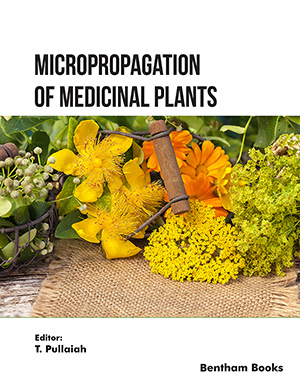Abstract
Reactive oxygen species (ROS) are involved in cardiovascular diseases and, in particular, in myocardial ischemia and reperfusion. Although the restoration of blood flow is essential for salvation of ischemic heart, reperfusion elicits itself additional tissue damages. This condition has been defined as myocardial-reperfusion injury. ROS have been firstly studied for their deleterious role during reperfusion, including protein oxidation, DNA strand breaks, lipids peroxydation or opening of mitochondrial permeability transition pore, that are all potentially harmful for the cell survival. Indeed, ROS are massively generated at the onset of reperfusion, contributing to the post-ischemic oxidative stress and mitochondrial dysfunction and ultimately leading to cardiomyocyte death. Animal studies using antioxidant treatments have shown beneficial and encouraging effects in myocardial ischemia-reperfusion. However, univocal interpretations of the results from clinical trials remain uncertain and controversial. Recently, another role of ROS had been highlighted. Multiple evidences had shown that ROS act as essential mediators of cardioprotection, mainly during pre- and post-conditioning. Thus, free radicals in myocardial ischemia reperfusion injury may be not considered just as detrimental but also as protective molecules. This review summarizes recent findings about this dual role of ROS in myocardial ischemia-reperfusion injury
Keywords: Cardioprotection, Cardiovascular diseases, Ischemia-reperfusion, Myocardial infarction, Oxidative stress
Current Signal Transduction Therapy
Title:Reactive Oxygen-Induced Cardiac Intracellular Pathways During Ischemia and Reperfusion
Volume: 7 Issue: 2
Author(s): Vincent Braunersreuther, François Mach and Fabrizio Montecucco
Affiliation:
Keywords: Cardioprotection, Cardiovascular diseases, Ischemia-reperfusion, Myocardial infarction, Oxidative stress
Abstract: Reactive oxygen species (ROS) are involved in cardiovascular diseases and, in particular, in myocardial ischemia and reperfusion. Although the restoration of blood flow is essential for salvation of ischemic heart, reperfusion elicits itself additional tissue damages. This condition has been defined as myocardial-reperfusion injury. ROS have been firstly studied for their deleterious role during reperfusion, including protein oxidation, DNA strand breaks, lipids peroxydation or opening of mitochondrial permeability transition pore, that are all potentially harmful for the cell survival. Indeed, ROS are massively generated at the onset of reperfusion, contributing to the post-ischemic oxidative stress and mitochondrial dysfunction and ultimately leading to cardiomyocyte death. Animal studies using antioxidant treatments have shown beneficial and encouraging effects in myocardial ischemia-reperfusion. However, univocal interpretations of the results from clinical trials remain uncertain and controversial. Recently, another role of ROS had been highlighted. Multiple evidences had shown that ROS act as essential mediators of cardioprotection, mainly during pre- and post-conditioning. Thus, free radicals in myocardial ischemia reperfusion injury may be not considered just as detrimental but also as protective molecules. This review summarizes recent findings about this dual role of ROS in myocardial ischemia-reperfusion injury
Export Options
About this article
Cite this article as:
Braunersreuther Vincent, Mach François and Montecucco Fabrizio, Reactive Oxygen-Induced Cardiac Intracellular Pathways During Ischemia and Reperfusion, Current Signal Transduction Therapy 2012; 7 (2) . https://dx.doi.org/10.2174/157436212800376726
| DOI https://dx.doi.org/10.2174/157436212800376726 |
Print ISSN 1574-3624 |
| Publisher Name Bentham Science Publisher |
Online ISSN 2212-389X |
 12
12
- Author Guidelines
- Graphical Abstracts
- Fabricating and Stating False Information
- Research Misconduct
- Post Publication Discussions and Corrections
- Publishing Ethics and Rectitude
- Increase Visibility of Your Article
- Archiving Policies
- Peer Review Workflow
- Order Your Article Before Print
- Promote Your Article
- Manuscript Transfer Facility
- Editorial Policies
- Allegations from Whistleblowers
- Announcements
Related Articles
-
Editorial [Hot Topic:Anti-Inflammatory Strategy: Old Ally or New Promise in Therapy (Guest Editor: Marcella Reale)]
Anti-Inflammatory & Anti-Allergy Agents in Medicinal Chemistry Acid-Sensing Ion Channels: A Novel Therapeutic Target for Pain and Anxiety
Current Pharmaceutical Design Microglial Integrity is Maintained by Erythropoietin Through Integration of Akt and Its Substrates of lycogen Synthase Kinase-3β, β-Catenin, and Nuclear Factor-κB
Current Neurovascular Research Effects of Drug Transporters on Pharmacological Responses and Safety
Current Drug Metabolism Antileukotriene Drugs: Clinical Application, Effectiveness and Safety
Current Medicinal Chemistry Clinical Approach to Diabetic Cardiomyopathy: A Review of Human Studies
Current Medicinal Chemistry Role of microRNAs on Blood Brain Barrier Dysfunction in Vascular Cognitive Impairment
Current Drug Delivery Oxidative Stress Protection by Novel Telomerase Activators in Mesenchymal Stem Cells Derived from Healthy and Diseased Individuals
Current Molecular Medicine Use of Recombinant Human Erythropoietin as an Antianemic and Performance Enhancing Drug
Current Pharmaceutical Biotechnology VDAC-Targeted Drugs Affecting Cytoprotection and Mitochondrial Physiology in Cerebrovascular and Cardiovascular Diseases
Current Medicinal Chemistry Stimulated CB1 Cannabinoid Receptor Inducing Ischemic Tolerance and Protecting Neuron from Cerebral Ischemia
Central Nervous System Agents in Medicinal Chemistry A Pilot Study to Assess Adenosine 5’-triphosphate Metabolism in Red Blood Cells as a Drug Target for Potential Cardiovascular Protection
Cardiovascular & Hematological Disorders-Drug Targets The Evidence Base for Revascularisation of Chronic Total Occlusions
Current Cardiology Reviews Postconditioning: A New Paradigm for Myocardial Protection?
Current Cardiology Reviews Electroacupuncture Reduces Hemiplegia Following Acute Middle Cerebral Artery Infarction with Alteration of Serum NSE, S-100B and Endothelin
Current Neurovascular Research The Application of Mass Spectrometry to Proteomics and Metabolomics in Biomarker Discovery and Drug Development
Current Molecular Pharmacology GDF11 Attenuated ANG II-Induced Hypertrophic Cardiomyopathy and Expression of ANP, BNP and Beta-MHC Through Down- Regulating CCL11 in Mice
Current Molecular Medicine Diabetes-induced Epigenetic Signature in Vascular Cells
Endocrine, Metabolic & Immune Disorders - Drug Targets Does Angiotensin Converting Enzyme Inhibitor Protect the Heart in Cardiac Surgery? From Laboratory to Operating Room: Clinical Application of Experimental Study
Current Pharmaceutical Design Bid Stands at the Crossroad of Stress-Response Pathways
Current Cancer Drug Targets


























